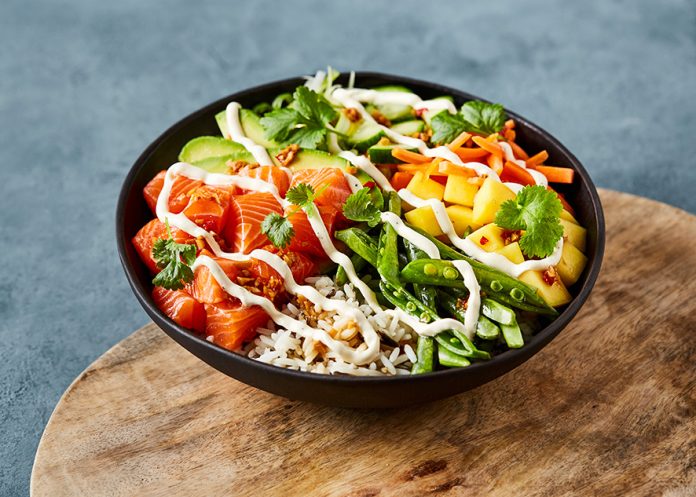UK poké popularity grows, yet just one in three make it.
New consumer research indicates strong growth potential for poké in the UK as more people begin preparing raw fish dishes at home, following years of expansion in the sushi category.
The study, commissioned by the Norwegian Seafood Council (NSC), found that 42 percent of UK consumers choose poké when dining out, while 54 percent have tried making it themselves. However, only 30 percent prepare it at home monthly and 15 percent weekly, suggesting a significant gap between out-of-home and in-home consumption.
The sushi market has grown by more than £31 million in value and 1,480 tonnes in volume over the past two years, according to NIQ Scantrack data. Researchers say this momentum is creating opportunities for retailers and brands to expand into poké through meal kits, ready-to-eat formats and fresh ingredients.
Health and taste are the main drivers behind poké’s appeal, cited by 49 percent and 60 percent of consumers respectively. The dish’s flexibility and ease of assembly are also attracting interest, particularly among those looking for nutritious, high-protein meals that can be customised at home.
Salmon remains the most popular ingredient, used by 63 percent of consumers making poké at home — with 37 percent opting for cooked salmon and 26 percent using raw. Other commonly used ingredients include cooked tuna (33 percent), cold-water prawns (26 percent), and cod (20 percent).
Retailers are seen as central to the category’s expansion, with 67 percent of consumers buying poké ingredients in supermarkets.
The findings suggest that, as consumers become more confident in handling and preparing raw seafood, there is considerable scope to grow the at-home poké market and diversify beyond salmon to include other cold-water species.


